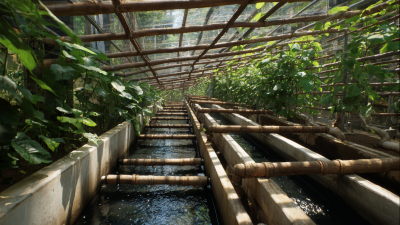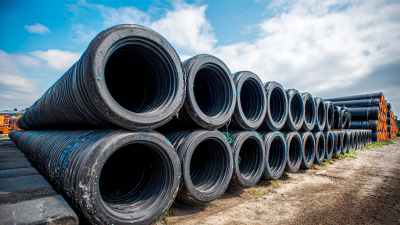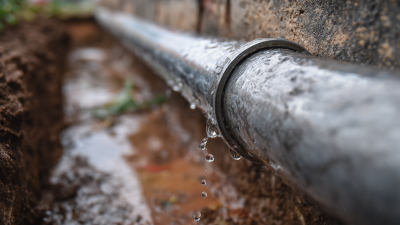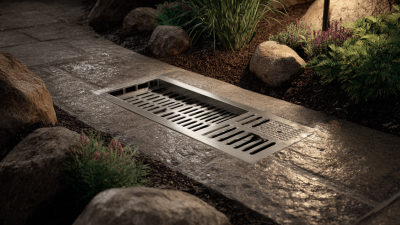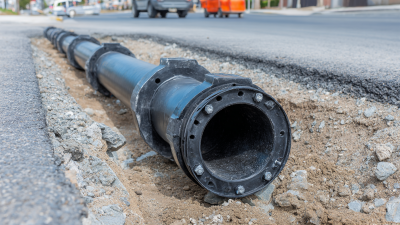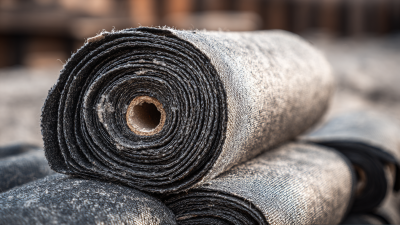In the ever-evolving landscape of construction, optimizing performance and sustainability has become paramount. One of the most effective yet often underappreciated tools in achieving these goals is the use of geotextiles. These versatile materials offer numerous advantages, from enhancing soil stability and improving drainage to reducing erosion and managing stormwater runoff. As construction projects become increasingly complex, the integration of geotextiles not only enhances the structural integrity of various applications but also contributes to environmental conservation efforts. This blog will delve into the top strategies for leveraging geotextiles in construction, showcasing best practices and innovative uses that can elevate project outcomes. By understanding how to effectively implement these materials, construction professionals can significantly improve performance, efficiency, and sustainability in their projects.

Geotextiles are revolutionizing construction projects, particularly in the realm of soil stabilization. These synthetic, permeable materials serve multiple functions including separation, reinforcement, filtration, and erosion control. By improving the natural characteristics of soil, geotextiles enhance drainage and stability, which are critical factors for successful construction. When used in weak soil conditions, they provide the necessary support to prevent settling and other structural failures.

Furthermore, the application of geotextiles extends to sophisticated solutions like drainage geocomposites in dykes. These structures are vital for flood management, as they govern water levels and prevent overflow. Incorporating geosynthetics within these systems not only ensures effective water flow management but also reinforces the integrity of the levees, securing them against potential breaches. As the demand for innovative construction materials grows, the role of geotextiles will continue to expand, showcasing their significance in modern building practices.
Geotextiles play a crucial role in enhancing drainage solutions for construction sites, addressing one of the key challenges in managing site conditions effectively. Made from synthetic and permeable materials, geotextiles improve the natural characteristics of soil, allowing for better water management and reinforcing vulnerable areas. Their ability to mitigate erosion significantly reduces the risk of environmental disturbances, making them an indispensable tool in modern construction projects.
The growing demand for effective drainage solutions is evident, as the U.S. geotextiles market was valued at $484.3 million in 2022 and is projected to grow at a CAGR of 7.2% during the forecast period. This growth underscores the increasing recognition of geotextiles in ensuring the stability and sustainability of construction sites. As professionals seek innovative ways to enhance performance while maintaining compliance with environmental standards, integrating geotextiles into project designs is becoming more prevalent, promising both efficiency and compliance in the evolving landscape of construction.
Geotextiles play a vital role in improving erosion control within civil engineering projects. As synthetic and permeable materials, they enhance the natural characteristics of soil, which is crucial for effective drainage and reinforcing vulnerable areas. By providing a barrier that allows water to pass while retaining soil, geotextiles significantly reduce erosion at construction sites, helping to stabilize the ground and maintain surrounding ecosystems. This functionality is increasingly important as environmental awareness and sustainable construction practices become the norm.
The U.S. geotextile market, valued at $484.3 million in 2022, projects a robust growth trajectory, up by 7.2% annually. This surge is largely driven by a rising demand for eco-friendly construction materials and techniques that prioritize erosion and sediment control. With recent investments in production facilities aimed at enhancing the availability of geotechnical products, the industry is poised to meet the growing needs of modern civil engineering. Using geotextiles not only addresses immediate erosion challenges but also contributes to the long-term sustainability of construction projects, aligning with a broader commitment to environmental stewardship.

Geotextiles have emerged as a crucial element in modern construction projects, particularly when it comes to enhancing load distribution and structural integrity. By utilizing geotextiles, engineers can significantly improve the performance of various structures such as roads, embankments, and retaining walls. These synthetic fabrics serve as a reinforcement layer, allowing for even weight distribution across the surface. This not only prevents excessive settlement but also minimizes the risk of failure due to uneven loading conditions.
In addition to load distribution, geotextiles play a vital role in maintaining the structural integrity of construction projects. They provide excellent drainage properties, enabling excess water to escape from the soil layers. This drainage reduces pore water pressure, which can be detrimental to soil stability. By keeping the soil conditions optimal, geotextiles help prolong the lifespan of structures and reduce the need for costly repairs. Furthermore, their resistance to soil erosion ensures that the foundational integrity of a project remains intact, even in adverse weather conditions.
Through these mechanisms, geotextiles are revolutionizing the way construction projects are executed, leading to safer and more efficient outcomes.
Geotextiles have emerged as an essential component in construction projects, primarily due to their
cost-effectiveness and performance enhancement capabilities.
According to the Geosynthetic Research Institute, the use of geotextiles can reduce construction costs by
approximately 30% when properly integrated into soil stabilization and
drainage systems. Their durability and longevity mean that investment in geotextile solutions can lead to
significant savings over the lifetime of a project, effectively mitigating the need for
frequent repairs or replacements.
Tip: When selecting geotextiles, consider the specific project requirements, such as
soil type and environmental conditions, to ensure the most effective performance and cost savings.
Additionally, the versatility of geotextiles in various applications, such as erosion control and road
construction, enhances their appeal to project managers aiming for long-term sustainability. The
International Journal of Geosynthetics reports that projects integrating geotextiles experience
enhanced performance metrics, including decreased maintenance costs and
improved structural integrity. This results not only in financial savings but also in reduced
environmental impact, as fewer materials are required for upkeep.
Tip: Collaborate with geotextile suppliers early in the planning stage to leverage their
expertise in optimizing material selection and application techniques.
